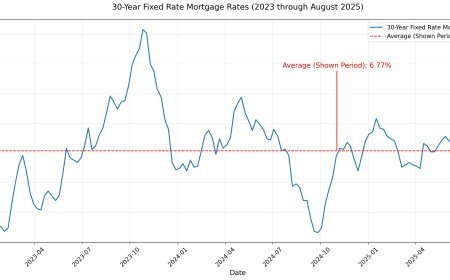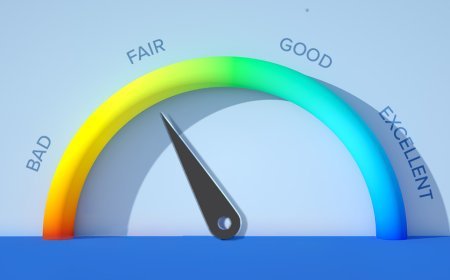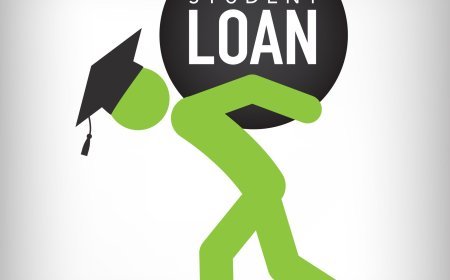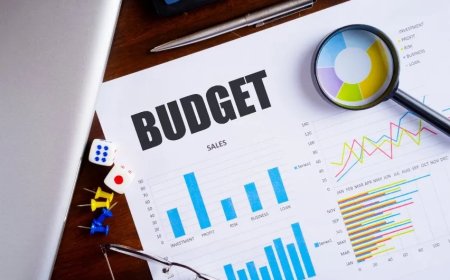Smart Year-End Money Moves to Boost Your Financial Health
As the year comes to a close, it's the perfect time to take a good look at your finances. Making smart year-end money moves can set you up for a successful financial future. This article was written by both financemastering.com and usbestnews.com teams.

As the year comes to a close, it's the perfect time to take a good look at your finances. Making smart year-end money moves can set you up for a successful financial future.
You can boost your savings, reduce your tax burden, and improve your financial health with just a few strategic actions.
Start by considering contributions to your retirement accounts, like your 401(k) or IRA. Not only does this help secure your future, but it may also lower your tax bill for the year.
Additionally, reviewing your insurance policies or maximizing your Health Savings Account (HSA) can lead to savings and better coverage.
Don't forget about other opportunities, like making charitable contributions or using up your Flexible Spending Account (FSA) funds. Taking these steps now can save you money and give you peace of mind heading into the new year.
Maximize Retirement Account Contributions
Maximizing your retirement account contributions can significantly boost your savings for the future. Here’s how you can take advantage of different retirement accounts to make the most of your contributions.
Understanding 401(k) and 403(b) Limits
When you contribute to a 401(k) or 403(b), you need to know the contribution limits set by the IRS. For 2025, the limit for employee contributions is $22,500. If you're 50 or older, there's a catch-up contribution option that allows you to add an extra $7,500.
Make sure you review your employer's plan as well. Some employers offer matching contributions, which can effectively increase your retirement savings without any extra cost to you. Always try to contribute enough to take full advantage of any employer match.
Contributing to an IRA
An Individual Retirement Account (IRA) is another smart way to save for retirement. For 2025, you can contribute up to $6,500 if you're under 50 and $7,500 if you're 50 or older. This applies to both traditional IRAs and Roth IRAs.
With a traditional IRA, your contributions may be tax-deductible, providing you with a tax benefit now. Roth IRAs, on the other hand, let you withdraw funds tax-free in retirement. If you have a non-working spouse, consider contributing to a spousal IRA to maximize your family’s retirement savings.
Strategies for After-Tax Money
After maximizing your contributions to tax-deferred accounts, consider strategies for using after-tax money to bolster your retirement funds.
One effective method is to convert a traditional IRA to a Roth IRA. This allows you to pay taxes now while allowing your money to grow tax-free.
Another option is to use after-tax dollars to contribute to a workplace plan that allows for this. It can increase your savings limit significantly. Being strategic with these contributions can set you up for a more secure financial future.
Adjust Tax Withholding and Payments
As you get ready for year-end finances, it's important to think about how to adjust your tax withholding and payments. Smart planning can help you manage your taxable income and reduce your overall tax bill.
Optimizing Taxable Income
To maximize your financial foundation, consider your taxable income. You can adjust your withholding by checking your W-4 form. The IRS provides a tool that can help you determine if you are withholding enough.
If you find that you need to increase your withholding, submitting a new W-4 is straightforward. Doing this can prevent any surprises when the tax bill arrives.
Focus on your adjusted gross income as it impacts how much you owe. Changing contributions to retirement accounts can also lower your taxable income.
Reducing Tax Burden
Finding ways to reduce your tax burden should be a priority. You could make estimated payments if you expect to owe significant taxes. This is especially important for self-employed individuals or side hustlers.
Consider using tax credits and deductions to lessen your total. Charitable donations, for example, might qualify for deductions. Adding to your retirement savings not only builds your future but also reduces your taxable income for this year.
Make sure to track these expenses carefully to ensure they are accurately reported on your tax return.
Handling Capital Gains
If you’re dealing with capital gains, it’s wise to plan ahead. Selling investments can lead to taxes if you haven’t thought it out. Understanding short-term and long-term capital gains tax rates is essential.
Try to hold investments for over a year to benefit from lower tax rates. You might also consider offsetting gains with losses from other investments. This can help you manage your taxable income effectively.
Make your investment decisions well before the end of the year to avoid added taxes that could be minimized. Taking proactive steps can ensure your financial plans remain strong.
Invest Smartly and Diversify
Smart investing is about making informed decisions that can lead to financial growth. Diversifying your investments helps to reduce risk and increase your chances for success. Let’s dive into some key strategies.
Assessing Asset Allocation
Evaluating your asset allocation is crucial for successful investing. This means deciding how much of your money goes into various types of investments, like stocks, bonds, and cash.
A common approach is the 60/40 rule:
- 60% in stocks: These can offer higher growth potential.
- 40% in bonds: These typically provide stability and income.
As you assess your allocation, consider your risk tolerance and investment goals. Adjust your percentages based on market conditions and changes in your life, such as retirement or a new job.
Rebalancing Investment Portfolio
Your investment portfolio needs regular check-ups to stay aligned with your goals. Rebalancing is the process of adjusting your investments back to your original allocation.
For example, if your stock investments perform well, they might take up a larger portion of your portfolio than planned. Here’s how to rebalance:
- Review Asset Distribution: Check if allocations are still on target.
- Sell High, Buy Low: Sell some overperforming assets and use the funds to buy underperforming ones.
- Set a Schedule: Consider rebalancing once or twice a year.
This keeps your risk level manageable and helps maintain consistent growth.
Exploring Tax-Free Investments
Investing in tax-free options can boost your overall returns. Accounts like Roth IRAs allow your contributions to grow without being taxed, which is a big advantage.
Here are some popular tax-free investment options:
- Roth IRA: Withdrawals are tax-free in retirement.
- Health Savings Account (HSA): Save for medical expenses with tax benefits.
- Municipal Bonds: Interest earned is usually exempt from federal taxes.
These options help your money grow while minimizing your tax burden. It's important to know the rules and limits for each account to make the most of your investments.
Plan Healthcare Spending
Planning for healthcare spending is important, especially as the year ends. You have tools at your disposal to make the most of your healthcare budgets, like Health Savings Accounts (HSAs) and Flexible Spending Accounts (FSAs). Using these accounts wisely can help you save money on qualified medical expenses.
Maximizing HSA and FSA
HSAs and FSAs let you set aside pre-tax money for healthcare costs. With an HSA, you can save for future medical expenses while potentially earning interest. You can also invest those funds, which can grow over time.
For FSAs, it's crucial to spend the money before the end of the year, as leftover funds may not carry over. Make the most of these accounts by reviewing your expenses. Plan to use your funds for prescriptions, preventive care, and other eligible costs.
Be sure to check what your specific plan covers. This way, you can maximize your tax savings and reduce your out-of-pocket expenses effectively.
Preparing for Qualified Medical Expenses
Understanding qualified medical expenses helps you spend wisely. These expenses often include doctor visits, dental care, and vision services.
It’s important to know what counts as qualified to maximize your HSAs and FSAs.
You should keep track of your medical expenses throughout the year. You may want to save receipts and documents that prove your spending. This organization can make it easier when it comes time to make withdrawals or submit claims.
Additionally, consider scheduling necessary appointments before the year ends. This ensures you take full advantage of your health accounts while being prepared for any out-of-pocket costs that may arise in the future.
Consult Financial Professionals
Getting help from financial professionals can make a big difference in your year-end money moves. They provide expert advice tailored to your situation. This can improve your financial planning and help you save on taxes.
Seeking Advice from a Financial Advisor
Reaching out to a financial advisor can help you understand your financial health better. They can analyze your current financial plan and suggest improvements.
A financial advisor helps you set and reach specific goals. They may offer insights on investment strategies that fit your risk tolerance and future plans.
Make sure to choose a qualified advisor. You want someone with relevant experience and credentials. Look for advisors who are certified financial planners (CFPs). They follow a strict code of ethics, ensuring you receive trustworthy advice.
Tax Planning with CPAs and CFPs
Tax planning is crucial as the year-end approaches. Working with a CPA (Certified Public Accountant) or a CFP can help you navigate complex tax scenarios.
These professionals can help you maximize deductions and credits. This means you might save money when filing your taxes.
They can also suggest smart strategies for retirement savings that lower your taxable income.
A CPA can analyze your earnings and expenses. They provide advice on how to structure your finances for tax efficiency.
Having a clear plan for your tax situation can lead to better outcomes and improved financial stability.
What's Your Reaction?
 Like
0
Like
0
 Dislike
0
Dislike
0
 Love
0
Love
0
 Funny
0
Funny
0
 Angry
0
Angry
0
 Sad
0
Sad
0
 Wow
0
Wow
0









































